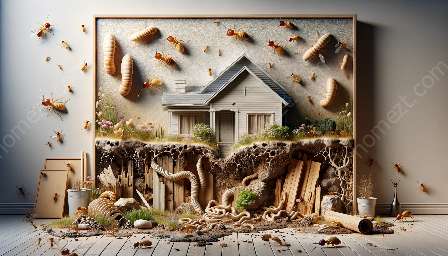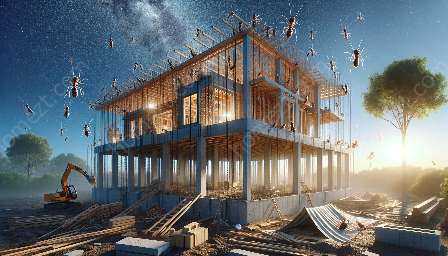Termites pose a significant threat to properties, causing extensive damage if left unchecked. In this comprehensive guide, we will explore the importance of risk assessment in termite control, the factors influencing termite risk, and strategies for effectively mitigating these risks.
Understanding Termite Behavior and Biology
Before delving into risk assessment, it's essential to understand the behavior and biology of termites. Termites are social insects that live in colonies and feed on wood, often causing severe structural damage to buildings. By gaining insights into termite behavior and lifecycle, pest control experts can better assess and mitigate the risks associated with infestations.
Factors Influencing Termite Risk
Several factors contribute to the risk of termite infestation and damage. These include environmental conditions, building construction, and proximity to potential termite habitats. Understanding these factors is vital for conducting a comprehensive risk assessment and developing targeted pest control strategies.
Environmental Conditions
Termites thrive in moist and warm environments, making properties in such areas more susceptible to infestations. Factors such as climate, soil moisture, and landscaping can influence termite activity. By evaluating environmental conditions, pest control professionals can identify high-risk areas and implement preventative measures.
Building Construction and Materials
The design and construction of a building play a pivotal role in termite risk assessment. Wood-to-soil contact, untreated timber, and conducive construction practices can attract termites, increasing the likelihood of infestation. Inspecting the building structure and materials is crucial for identifying potential vulnerabilities and implementing protective measures.
Proximity to Termite Habitats
Properties located close to natural termite habitats, such as wooded areas or decaying vegetation, face an elevated risk of infestation. Understanding the proximity of these habitats to the property is essential for gauging the potential threat and designing tailored control strategies.
Mitigating Termite Risks Through Integrated Pest Management
Effective termite control relies on proactive risk assessment and the implementation of integrated pest management (IPM) strategies. IPM encompasses various methods, including prevention, monitoring, and targeted treatment, to minimize the risks associated with termites.
Preventative Measures
Implementing physical barriers, such as termite-resistant materials and soil treatments, is an integral part of risk mitigation. By preventing termites from accessing the building and its surroundings, property owners can reduce the likelihood of infestation and damage.
Monitoring and Early Detection
Regular inspections and monitoring for termite activity are crucial for early detection and intervention. By promptly identifying signs of infestation, such as mud tubes and wood damage, pest control professionals can initiate targeted treatments to mitigate the risks effectively.
Targeted Treatment Strategies
Utilizing environmentally friendly and targeted treatment methods, such as baiting systems and termiticides, can effectively manage termite populations while minimizing the impact on the environment and non-target species.
Education and Awareness
Empowering property owners with knowledge about termite risks and control measures is instrumental in fostering a proactive approach to pest management. Educational initiatives and awareness campaigns can help individuals recognize potential risks and take proactive measures to safeguard their properties.
Conclusion
Effective risk assessment in termite control is a vital component of comprehensive pest management. By understanding the factors influencing termite risk and implementing targeted mitigation strategies, property owners and pest control professionals can effectively protect properties from the detrimental effects of termite infestations. Embracing a proactive and integrated approach to termite control is essential for minimizing risks and preserving the integrity of structures.




















































